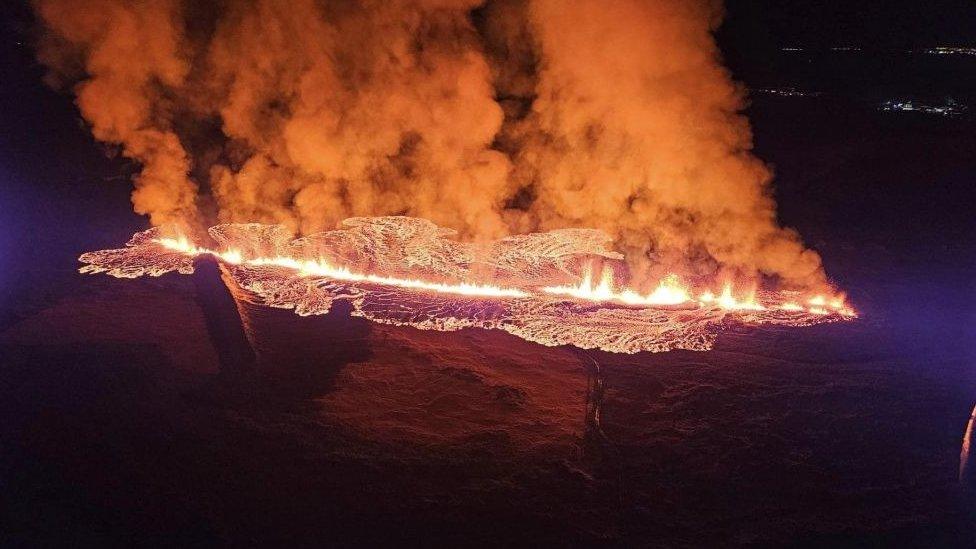Iceland volcano: Lava and smoke in third eruption since December
- Published
- comments
Footage shows fountains of molten rock shooting from faults in the ground in the Reykjanes peninsula
Fountains of lava have seen in south-west Iceland, in the third volcanic eruption there since December.
Spectacular footage from the Reykjanes peninsula showed molten rock oozing along a opening in the ground estimated at 3km (1.86 miles) in length near Sylingarfell, where plumes of lava shot more than 50m (160ft) into the air.
It was witnessed by a Coast Guard helicopter that was flying over the peninsula.
Guests have been told to leave the popular Blue Lagoon geothermal spa but reports showed no immediate threat to the nearby town of Grindavik.
Iceland volcano: Kids tell us what life is like there
Grindavik had already been evacuated during the last eruption on 14 January, with some children who lived there being moved to the capital city of Reykjavík,
It happened after the nearby Fagradalsfjall volcano erupted for a second time in less than a month.
Everyone is safe as people were advised to leave the town in plenty of time, but lava has damaged buildings and set fire to some homes.
Volcanoes can look like small mountains or hills.
A volcano is an opening in the Earth's crust that allows magma, hot ash and gases to escape.
People who were evacuated have been settling into life in a new area, while the government works out when it will be safe for them to return home after the volcanic eruptions end.
However, the Icelandic Met Office (IMO) has warned that the country's south-western peninsula could face decades of volcanic instability.
The Reykjanes peninsula had lain dormant for about 800 years until seismic activity started in 2020.
There have since been six eruptions, including the current one.
The IMO's Matthew Roberts said that since eruptions on the Reykjanes Peninsula began again in 2021, which may mark a new "eruptive cycle".
"We expect to see volcanic eruptions along the peninsula, not just repeatedly in the same location."
The Big Question: Why do volcanoes actually erupt?
Most volcanoes form at the boundaries of Earth's tectonic plates, huge slabs of Earth's crust and upper mantle, which fit together like pieces of a puzzle.
These plates are not fixed, but are constantly moving at a very slow rate.
Iceland is very used to volcanic activity because it sits over the Mid-Atlantic Ridge.
The Eurasian and North American plates are pulling apart from each other, a few centimetres each year.
- Published15 January 2024

- Published1 May 2024

